![]()
![]()
![]()
Use LEFT and RIGHT arrow keys to navigate between flashcards;
Use UP and DOWN arrow keys to flip the card;
H to show hint;
A reads text to speech;
45 Cards in this Set
- Front
- Back
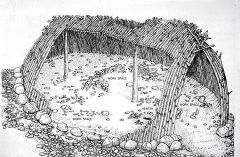
|
Terra Amata (France) c. 400,000 BCE |
|
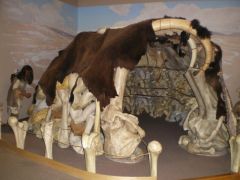
|
Mammoth Bone Hut (Mezhirich, Russia) c. 10,000 BCE |
|
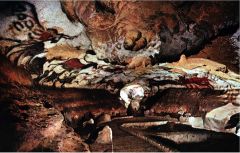
|
Lescaux Cave (France) c. 10,000 BCE |
|
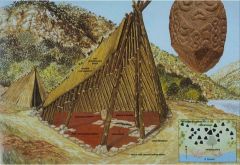
|
Lepenski Vir (Serbia) c. 6300-4800 BCE First example of permanent |
|
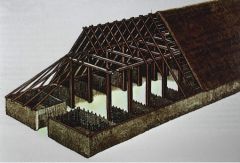
|
Longhouse (Netherlands) c. 5000-4000 BCE |
|
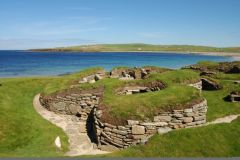
|
Skara Brae (Scotland) c. 2000 BCE |
|
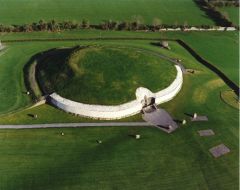
|
New Grange (Ireland) c. 3000 BCE Passage grave |
|
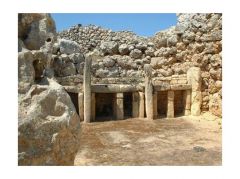
|
Ggantija (Malta) c. 2000 BCE
|
|
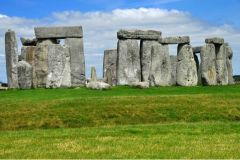
|
Stonehenge (England) c. 2750-1500 BCE Beginning of urban construction |
|
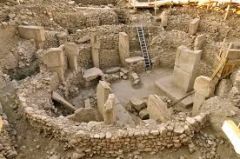
|
Göbekli Tepe (Turkey) c. 10,000 BCE Oldest temple in the world |
|
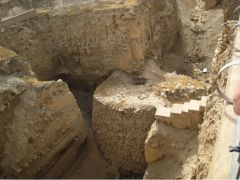
|
Jericho (Israel/Palestine) c. 7500 BCE Dwellings had plaster floors and mud brick walls |
|
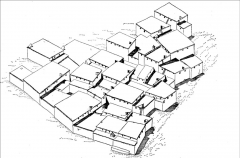
|
Çatalhöyük (Turkey) c. 6000 BCE Clustered houses built together in one unit |
|
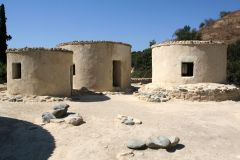
|
Khirokitia (Cyprus) c. 5500 BCE Development of First street |
|
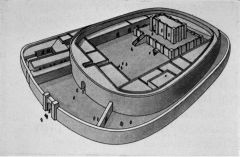
|
Oval Temple (Iraq) c. 2650-2350 BCE Walls allow transition from street to sacred space (controlled experience) |
|
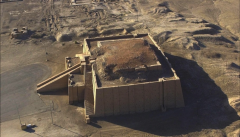
|
Ziggurat of Ur-Nammu (Iraq) c. 2113-2096 BCE Dedicated to Moon God/ large temples and articulated |
|
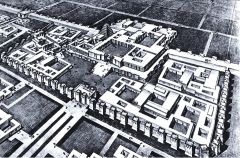
|
Citadel and Royal Palace of Sargon II (Iraq) c. 742-706 BCE Placed Palace in center for protection/palace is larger than ziggurat |
|
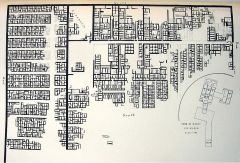
|
Worker’s Town at the pyramid site of King Sesostris II, Lower Egypt c. 1800 BCE Rational buildings |
|
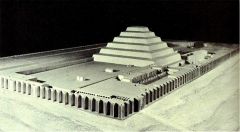
|
Mortuary complex of Zoser (Saqqara) c. 2680 BCE Architect: Imhotep |
|
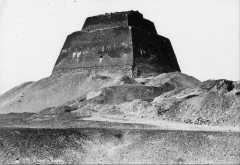
|
Stepped Pyramid of Sneferu (Meidum) c. 2680-2570 BCE
|
|
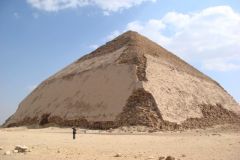
|
Bent Pyramid of Sneferu (Dahshur) c. 2690-2565 |
|
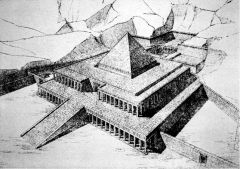
|
Mortuary Temple of Mentuhotep (Deir el-Bahri) c. 2050 BCE Not a pyramid, shows importance of priest |
|
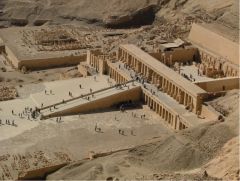
|
Mortuary Temple of Hatshepsut (Deir el-Bahri) c. 1500 BCE Architect: Senmut Inspires a feeling of procession |
|
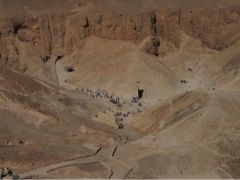
|
Valley of the Kings Valley surrounded by mountains and all the tombs were sealed up |
|
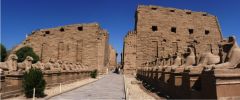
|
Temple of Amon (Karnak) c. 1525-1350 BCE Built along two axis (east to west and north to south)-different rulers added new parts to temple to leave legacy |
|

|
Troy (Turkey) c. 3000-1300 BCE |
|
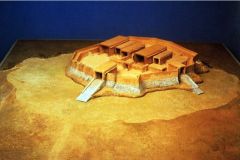
|
Troy II (Turkey) c. 2500-2200 BCE Walled city partially destroyed by earthquake |
|
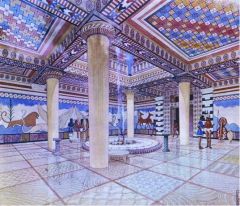
|
Palace of Nestor (Greece) c. 1300 BCE
|
|

|
Tiryns (Greece) c. 1,600-1,100 BCE Most important center due to its military fortress |
|
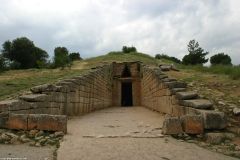
|
Treasury of Atreus (Greece) c. 1400 BCE Meant to be a tomb |
|

|
Lion Gate (Greece) c. 1250 BCE Structurally there to help relieve the weight of the wall |
|
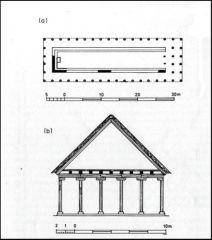
|
Second Temple of Hera, Samos (Greece) c. 7th century BCE
|
|
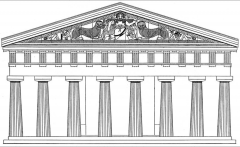
|
Temple of Artemis, Corfu (Greece) c. 600-580 BCE First true doric temple |
|

|
First Temple of Hera, Paestum (Italy) c. 550 BCE Enneastyle, pronounced neck of column. Expression more on horizontal look |
|
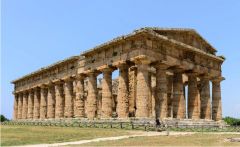
|
Second Temple of Hera, Paestum (Italy) c. 450 BCE Porch is narrower, Hexastyle peripheral use of optical refinement |
|

|
Temple of Artemis, Ephesus (Turkey) c. 560-550 BCE Largest structure in the world when built. Ionic order of column |
|
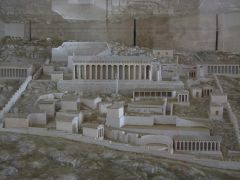
|
Temple of Apollo Delphi (Greece) c. 3rd-4th century B.C.E "Center of the world" |
|
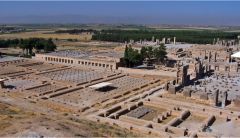
|
Persepolis (Iran)- Palace of Darius, Apadana, and Hypostyle Hall of Xerxes 518-460 BCE
|
|
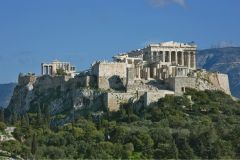
|
Temple of Athena Nike, Akropolis (Athens) 427-424 BCE Architect: Kallikrates
|
|
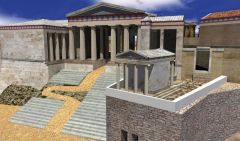
|
Propylaia, Akropolis (Athens) 437-432 BCE Architect: Mnesikles Ceremonial Gateway to the Acropolis |
|
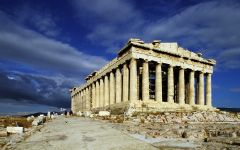
|
Parthenon, Akropolis (Athens) 447-432 BCE Architects: Iktinos and Kallikrates Sculptor of Athena: Phidias |
|
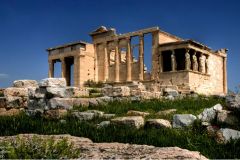
|
Erechtheion, Akropolis (Athens) 421-405 BCE Architect: Mnesikles Building built on the original site of the Temple of Athena. Built around an olive tree |
|
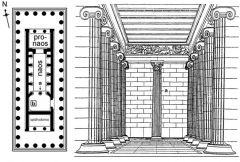
|
Temple of Apollo Epicurius, Bassae (Greece) c. 450 BCE Architect: Iktinos? Hexastyle. Made of limestone. Ionic columns are engaged |
|
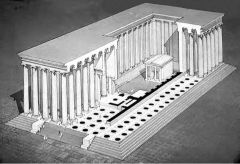
|
Temple of Apollo, Didyma (Turkey) c. 300-200 B.C.E. Built from a natural spring. Peristyle: dipteral |
|
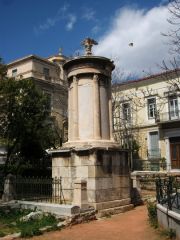
|
Monument of Lysicrates (Athens) 335 B.C.E. To show that Lysicrates won a competition. Corinthian columns supporting inside of a structure
|
|
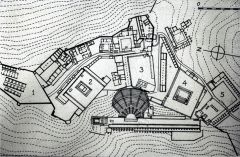
|
Theater, Altar of Pergamon (Turkey) 281-133 BCE Road acts as a spine of the complex |

